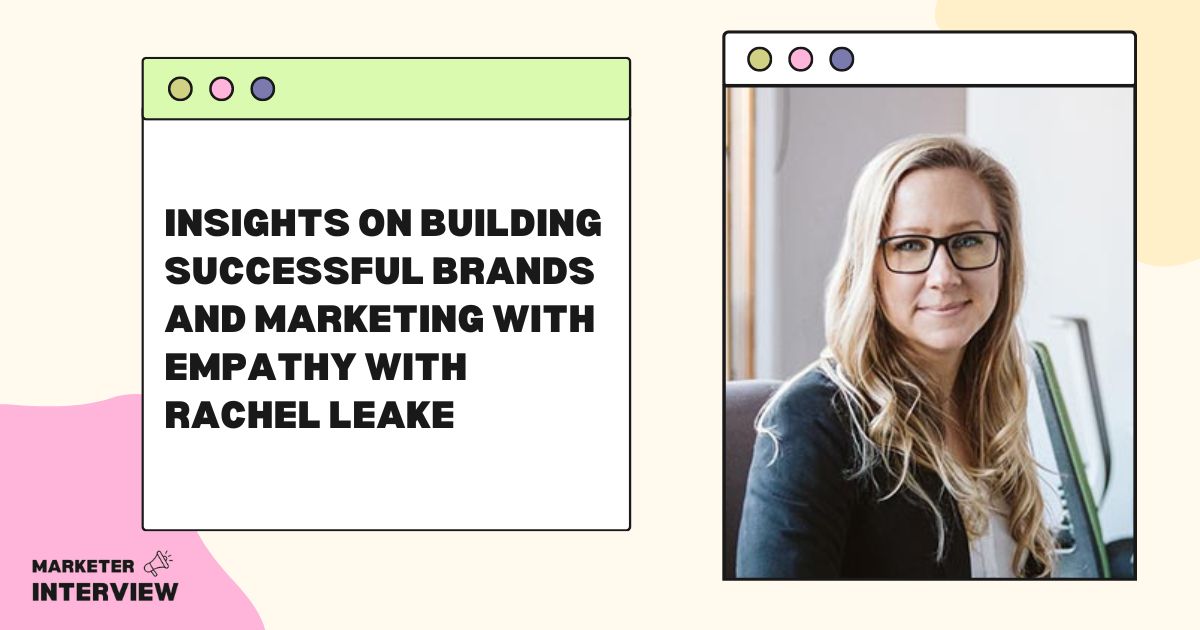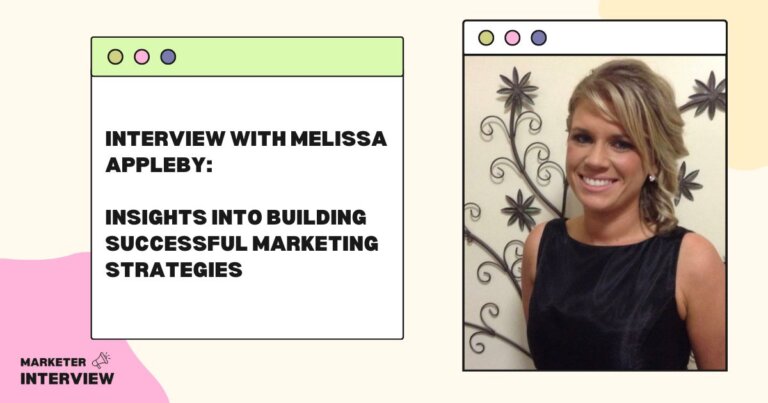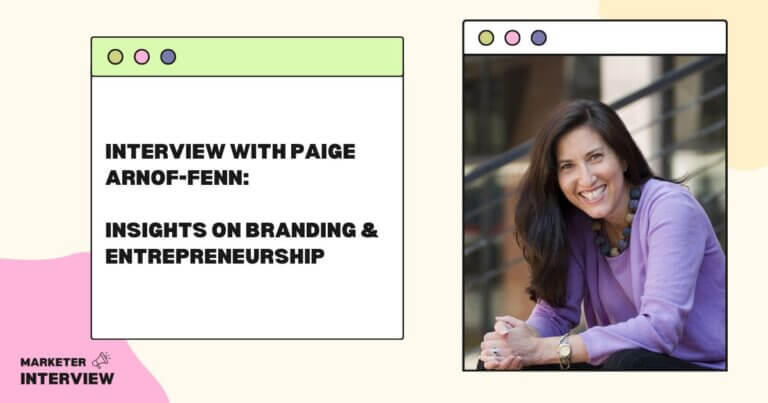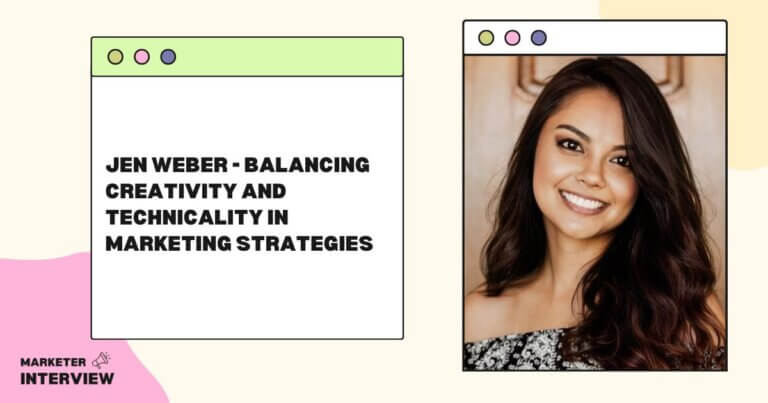Insights on Building Successful Brands and Marketing with Empathy with Rachel Leake
Today we hear from Rachel Leake, Creative Director at Haddad & Partners, who made the leap from technology startups to the agency world while keeping brand purpose at the forefront of her work.
Rachel specializes in branding and creative direction to help businesses express big ideas through impactful experiences that connect with people.
She is a leader with 12+ years of experience in the design and marketing industry developing award-winning creative, building brands and planning ad campaigns for businesses of all sizes—from startups to global corporations.
As a woman in leadership in a male-dominated field, she is also committed to creating a more inclusive, equitable workplace for the next generation of creatives.
She discusses how companies can empower women in the marketing sector while stressing the importance of instituting DEI initiatives to dismantle organizational biases and prioritize diversity.
She is an active member of the design and marketing community as a Mentor for Google D&AD Shift, a Founding Member of Juno Club Barcelona, an Ambassador with Adobe Insider and a Member of the Design Leadership Forum by Invision.
Let’s explore Rachel’s journey, experience and insights!
Contents
- 1 1. What inspired you to pursue a career in design and marketing, and how did you get started?
- 2 2. What is the one key skill you think every marketer should possess?
- 3 3. How do you approach brand strategy, and what are the essential elements of a successful brand?
- 4 4. What role do you think AI will play in marketing and how do you stay up-to-date with its advancements?
- 5 5. How can companies promote gender diversity and empower women in the marketing sector?
- 6 6. How do you ensure diversity in your marketing campaigns and why is it important?
- 7 7. What are some organizational processes that can prioritize not only diversity, but also inclusion?
- 8 8. Could you discuss your experience working in the European market, and how it differs from other regions?
- 9 9. How are European regulations affecting the marketing sector, and how is that shaping the future?
- 10 10. How do you lead a remote global team across multiple time zones?
1. What inspired you to pursue a career in design and marketing, and how did you get started?
It started with loving arts and crafts as a kid, progressed into playing around in Photoshop in high school and grew into a love of visual communication. I was fascinated with how design could impact opinion and influence action.
After finishing my bachelor’s, I defined the branding and led marketing efforts for several high-growth startups before making the leap into the agency world. My startup experience allowed me to combine my love for design and tech to create both data-driven and consumer-focused campaigns. Above all, I’ve always tried to put the consumer at the center of the brand experience.
2. What is the one key skill you think every marketer should possess?
Empathy. It’s imperative to champion the user’s experience above metrics. Human-centered design is standard for product development, but it also applies to marketing.
Empathetic marketing builds an emotional connection with the brand more than pushing a hard sell. The more you focus on your user’s feelings, needs and motivation above generalized facts about them, the more your campaigns and brand strategy will resonate.

3. How do you approach brand strategy, and what are the essential elements of a successful brand?
Brand strategy starts with market research and intense collaboration with the client. It’s imperative to have a deep understanding of their product offering, competitive landscape and target audience.
From there, we collaborate in working sessions with the client to understand their goals, mission and values. Then comes the creative magic of brainstorming how it comes together through visuals, messaging and positioning.
But, keep in mind it is so much more than just visual identity; it’s the public’s emotional perception, your user’s experience and even your internal company culture. Keep it consistent (deliver on the brand promise consistently across all touchpoints) and authentic (stay true to the brand’s values) for long-term success.
4. What role do you think AI will play in marketing and how do you stay up-to-date with its advancements?
At H&P, I spearhead a think tank that’s experimenting with AI to find new ways to serve our clients and make our teams more efficient. AI is getting incredibly smart and is capable of high-quality output.
While some fear that soon we’ll no longer need designers or writers, that’s not the case. Remember, marketing ultimately relies on human creativity and empathy. AI is responding to inputs and prompts; it’s not going to generate an “A-ha!” moment or next big idea.
However, AI will continue to transform the industry by allowing brands to analyze data and create targeted, personalized campaigns more efficiently. It’s also great to speed up processes, automate workflows and increase productivity.
5. How can companies promote gender diversity and empower women in the marketing sector?
It’s tough to answer this question succinctly because the answer is complex, and the issue isn’t restricted to gender.
Anyone who feels different, like those from marginalized groups, are also negatively affected by the patriarchy, systemic racism and heteronormativity in the workplace. The only way to make progress is by making conscious efforts to dismantle personal and organizational biases.
These intentional changes include diverse hiring, objective promotions, quantifiable DEI goals, employee training and most importantly, fostering a safe environment of trust where each employee can authentically show up as their true selves.
Studies prove that diversity creates stronger companies. Research shows that diverse companies perform better 1, female leadership is found to be more effective 2, and female founders generate more revenue than male 3.
1 “Delivering through diversity” by McKinsey, 2018
2 “Understanding the Differences in Reactive and Creative Orientations Between Female and Male Leaders” by Leadership Circle, 2022
3 “Why Women-Owned Startups Are a Better Bet” by Boston Consulting Group, 2018
6. How do you ensure diversity in your marketing campaigns and why is it important?
The most basic step is to add a DEI review in your process to check the work, preferably against a neutral, third-party. At H&P, we have an internal DEI team that reviews work for visual representation, accessibility and inclusive messaging.
While it’s important to self-assess our personal biases, the best solution is having diverse employees on staff that feel included and empowered to voice concerns. Even when you acknowledge your personal biases, you still can’t account for or speak on behalf of groups you aren’t a part of.
Our industry helps shape culture and drive change. It’s our responsibility to reflect equitable, respectful and inclusive representation both in our work and our workforce.
7. What are some organizational processes that can prioritize not only diversity, but also inclusion?
While diversity gets marginalized groups in the room, inclusion makes them feel welcome. Companies need to work on both in parallel, otherwise they won’t retain talent.
Analyze your company’s organizational processes from top to bottom. Are you tracking diversity data? Have you set recruitment quotas? Are you transparent about salary structures? Is your C-Suite diverse? Do you have a fully dedicated DEI position, or is it something employees do on top of their main job? Real progress requires a full commitment.
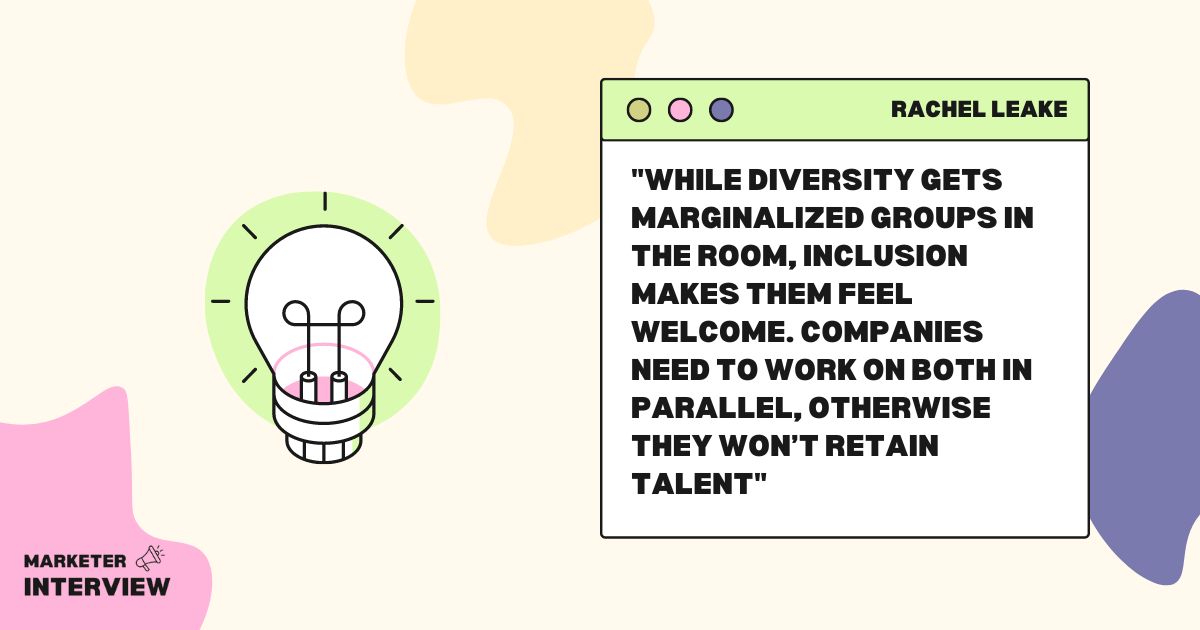
8. Could you discuss your experience working in the European market, and how it differs from other regions?
Being trilingual and based in Barcelona gives me a unique advantage in understanding and navigating the European market, both culturally and strategically. You can’t just expand a US-based campaign into Europe using a translation; your audience’s motives and needs will change by region.
As a whole, European consumers tend to be more environmentally conscious and socially aware, so brands that prioritize sustainability and social responsibility stand out best.
Finally, being empathetic to cultural differences is crucial when working for a global company and with international clients.
9. How are European regulations affecting the marketing sector, and how is that shaping the future?
The EU’s regulatory controls heavily favor consumer rights, with efforts like GDPR and Digital Services Act. Although the marketing sector is a bit averse to these regulations, that’s where the market is headed.
Even Google took a step towards decentralizing personal data when they announced they’d stop using third-party cookies in Chrome by the end of 2024. There’s a growing consumer trend towards transparency and control in advertising. Agencies will need to shift gears and adapt.
10. How do you lead a remote global team across multiple time zones?
Communication is key. It’s essential to establish a cadence of check-ins and team meetings with defined communication channels. Setting clear expectations and providing regular feedback is critical for success. Leverage technology like shared calendars and collaborative tools to allow your team to work together in real-time no matter how far apart you are.
Next, understanding cultural differences and respecting work hours among team members will go a long way in building trust and collaboration. Celebrating successes and creating opportunities for team bonding is critical to fostering a positive team culture.
Finally, a good balance of support, autonomy and flexibility is the recipe for success. Focus on your team’s output, not hours logged.
